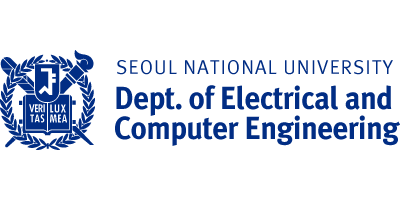Professor Sung-Hoon Kwon, ‘AI that diagnoses survival rates through analyzing the cancer cell network’, (Maeil Business Newspaper, 2022.08.19)
Research team of Sung-Hoon Kwon of the SNU College of Engineering
Published in the international journal ‘Nature’
From left, Yong-Ju Lee, SNU Ph.D. in electrical and computer engineering, Professor Jung-Hwan Park at SNU Boramae Hospital, Professor So-Hee Oh at SNU Boramae Hospital, Researcher Kyung-Seop Shin at SNU Department of Electrical and Computer Engineering, Professor Kyung-Cheol Moon at SNUH, and Professor Sung-Hoon Kwon at SNU Department of Electrical and Computer Engineering. [Photo: SNU]
Through joint research with Professor Kyung-Cheol Moon and Professor Jung-Hwan Park of SNUH, Professor Sung-Hoon Kwon of the Department of Electrical and Computer Engineering developed a diagnostic indicator that predicts the survival rate of patients by analyzing the interaction between cells in cancer tissues.
On the 19th, the research results were published in Nature Biomedical Engineering, an international academic journal. The title of the journal is ‘Derivation of prognostic contextual histopathological features from whole-slide images of tumors via graph deep learning’.
The research team analyzed about 1,000 cancer patients at the Seoul National University Hospital (SNUH) and 3,000 to 4,000 cancer patients listed in the US database over the past two years, and found common characteristics between patients with high survival rates. For such patients, the distances between cancer cells and immune cells were relatively close, and a specific pattern was formed when the cells were connected.
The team developed the world’s first deep-learning technology that expresses cancer tissue images as a ‘cancer cell network’, which represents intercellular patterns, and displays them as graphs that the medical staff can interpret.
It was proven with collaboration with SNUH that it is possible to create an AI model that predicts the survival rate of cancer patients, and the relationship between blood vessel formation in cancer tissue, cancer cells, and immune cells can be a diagnostic indicator of survival rates.
Professor Jeong-Hwan Park and So-Hee Oh of the SNU Boramae Hospital, who conducted the research as the first authors, said, “Deep learning models that can be interpreted by the staff have been proposed before, but this is the first study to suggest diagnostic indicators by reflecting complex interactions between cells.”, and explained that “The cancer microenvironment, which consists of interactions between cells, plays an important role in determining the risk of cancer. It is hoped that the proposed model would be able to make a breakthrough in discovering new diagnostic indicators.”
Dr. Yong-Ju Lee and Researcher Kyung-Seop Shin said, “The cancer cell network creation method and the graph deep-learning technology developed in this study are innovative methods that can be applied not only to cancer tissues, but also to any medical image data such as MRI and X-ray images. The study will help reveal important interactions within various medical image data.”
Source: https://ece.snu.ac.kr/community/news?bm=v&bbsidx=52780
Translated by: Do-Hyung Kim, English Editor of the Department of Electrical and Computer Engineering, kimdohyung@snu.ac.kr


